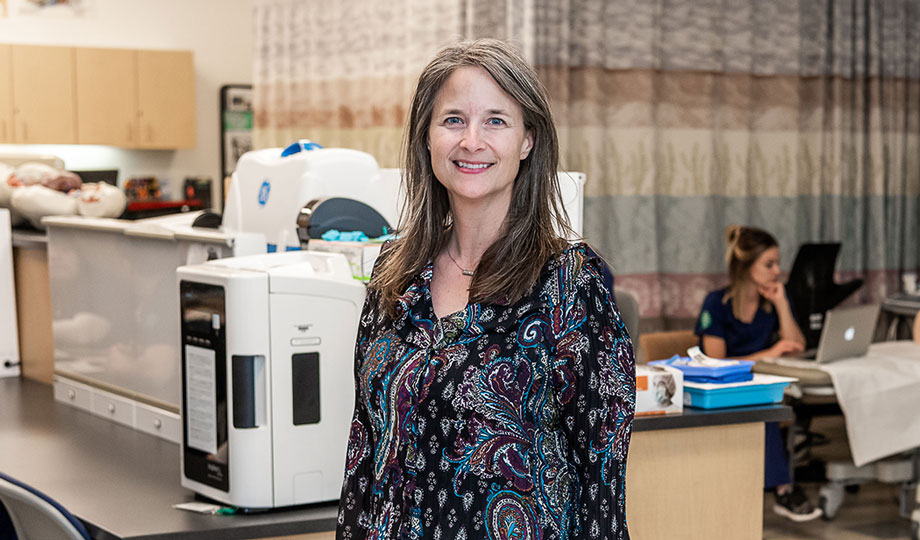
Program: Sonography
As a sonographer, Melissa McKirdie enjoys being part of a process that makes a difference in the lives of others.
“I get to noninvasively look inside the human body and obtain information that helps radiologists determine if there is a pathological process taking place, which allows them to provide a diagnosis, recommend a next step or see if a patient’s treatment is working,” she said. “I also enjoy the opportunity to be a kind and compassionate presence to people who are often scared or nervous. They come into our scanning room with heavy questions such as, ‘Is the lump I feel cancer?’ ‘Is my baby OK?’ or ‘Did the treatment get rid of my cancer?’ It is always my hope that during their time with me, they feel they have been cared for exceptionally.”
McKirdie, who started teaching full time at COD in 2012, didn’t start her career in medical imaging. After earning a degree in Therapeutic Recreation, she spent six years in a variety of roles— including applied behavior analyst, adapted physical education instructor and home trainer—at Little Friends, a therapeutic day school and center for children with autism and other developmental disabilities.
It was during her own pregnancies that McKirdie developed an interest in sonography. She was amazed and comforted by the skill of the sonographers and how the ultrasounds reported on the developing baby. That interest grew while she took a few years off to raise her children, and she began to research a new career.
“I felt excited with everything I found out about it: caring for patients, helping doctors and doing something where I wasn’t stuck behind a desk—all within a career that, due to technological and medical advances, makes you a lifelong learner,” she said.
After completing certificates in Diagnostic Medical Imaging Sonography (Ultrasound) and Diagnostic Medical Vascular Sonography at COD, McKirdie gained experience in a clinic specializing in reproductive endocrinology and at AMITA Health St. Joseph Medical Center Joliet. She performed abdomen, superficial structure, obstetrics, gynecology and vascular ultrasounds as well as assisted with procedures such as thoracentesis, paracentesis and biopsy.
She said her professional experiences and her time at COD make her uniquely suited to prepare students for success in the classroom and the workforce.
“I have worked in hospitals and clinics with small and large teams,” she said. “This is particularly important as there are workflow differences that I can prepare our students for prior to their clinical rotations. When I was a student in COD’s Sonography program, I encountered many teachable moments that I now share with my students. I feel my stories provide valuable lessons you can’t get from a textbook or lab setting.”
McKirdie said she feels blessed and grateful that COD provides her the opportunity to work with a talented team of adjuncts, professors, clinical coordinators, clinical instructors and sonographers to help students become the best sonographers in the area.
“The best thing about teaching is seeing the before and after,” she said. “When students start the program, many have never even seen an ultrasound machine. At the end of two years, they know how to use the machine well and understand the human body in such depth that they can assess and collect diagnostic information on over 10 organs. It is awesome to know that upon graduation they can start their careers and are well-prepared for them.”
More about the Diagnostic Medical Imaging -- Sonography program